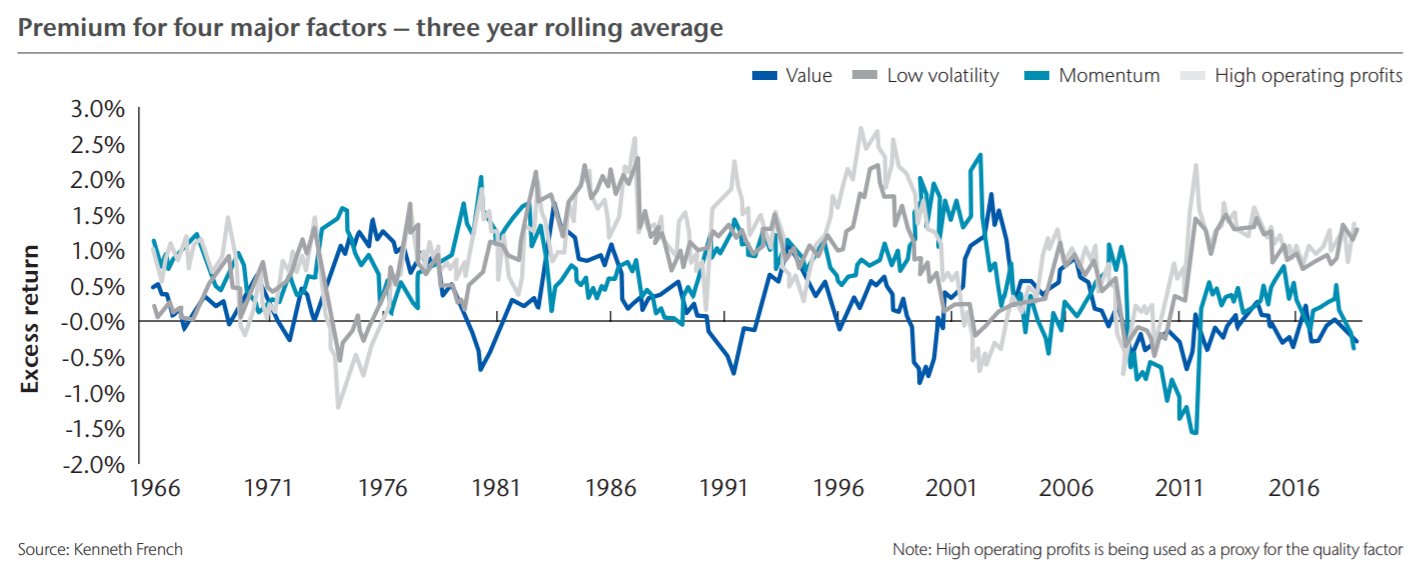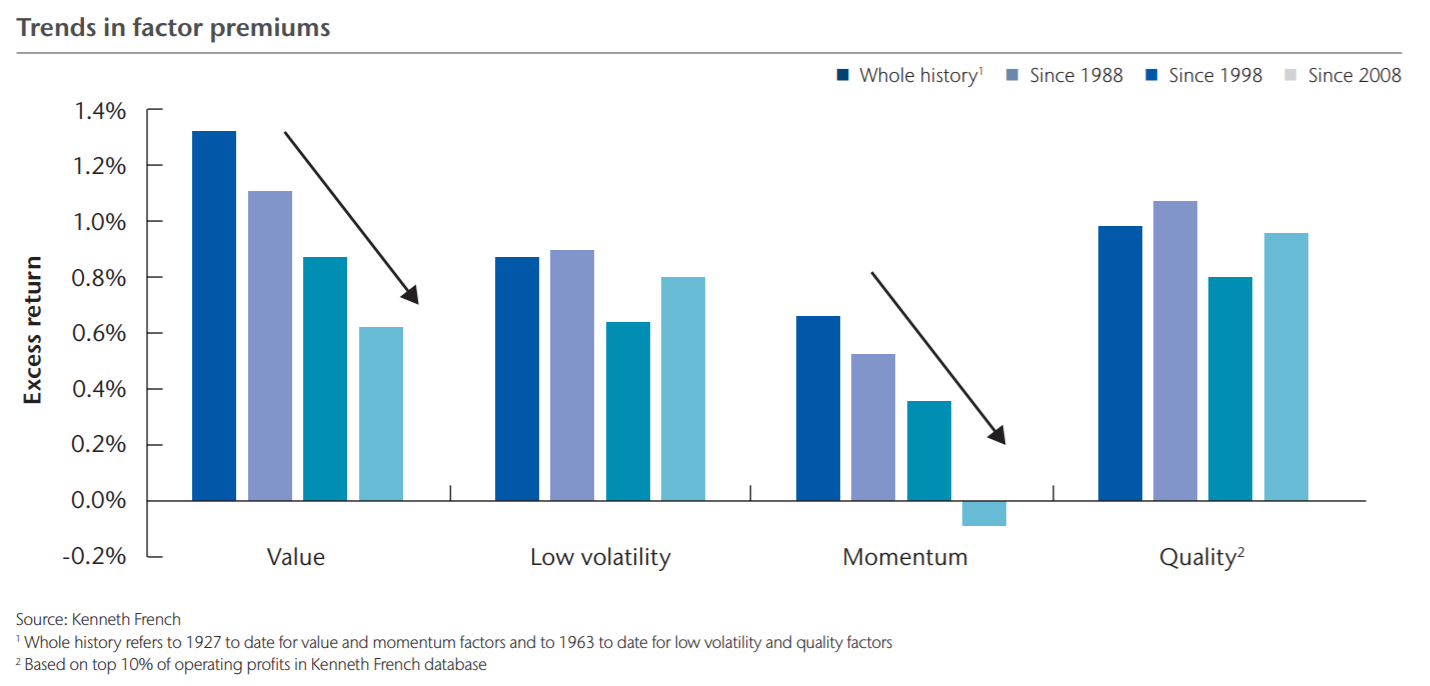Fears factor investing is becoming “too popular” and “overcrowded” are overdone, according to Aon, despite the rapid growth in assets under management in recent years.
The paper, entitled Factor investing – standing out from the crowd, said the overall evidence for overcrowding was “weak” from both a flows and valuations standpoint.
From a flows perspective, the argument inflows can distort the properties of a certain investment falls down due to the growth of passives entirely dwarfing factor investing, the report noted.
According to data from Morningstar, global assets in factor ETFs stood at $797bn at the end of 2018 compared to the wider ETF market which saw its assets break the $6trn barrier last year.
“Factor-based funds have certainly been popular, but this popularity has been dwarfed by the wider trend towards passive investing and away from active investing,” Andrew Peach (pictured), head of factor investing at Aon and co-author of the report, added.
ETF providers in smart beta catch 22
Meanwhile, the argument flows can raise the valuation beyond what is justified by fundamentals which in turn can cause reduced liquidity is only a temporary phenomenon for certain factors.
For example, low volatility and momentum have consistently been the most expensive over the past decade but this is relative to value which has been the cheapest.
Peach explained: “From a valuation standpoint, the evidence suggests variability and certainly some periods when a particular factor has become more expensive relative to history and the market cap index. But it does not suggest anything permanent or particularly concerning.”
Factor premiums
The research did find factor premiums have dropped for value and momentum in recent years but low volatility and quality held up well.

However, Peach explained value’s relatively weak performance has been partially driven by problems with the financial sector following the Global Financial Crash.
The financial sector holds a 21.6% weighting in the EDHEC Value index versus a 16.1% weighting in the MSCI World index.
“Another possible driver of the declining value factor premium is the increasing dominance of the technology sector in society,” Peach continued. “Technology stocks are many things, but they are not value stocks in the main. So, value indices have not kept pace for this reason too.”
Research Affiliates: What is driving value’s underperformance?
Meanwhile, the momentum factor’s relative poor performance has been driven by the whole market-cap index becoming increasingly momentum-driven since 2008.
In this environment, the paper explained it has become difficult for the momentum factor to outperform but this would be restored when market performance becomes more dispersed.
“Despite the decline in the value factor premium, it still exists,” Peach concluded. “Meanwhile, the negative premium for the momentum factor since 2008 can be explained by the rarefied circumstances of the past decade.
“Our view is that the market will become much more dispersed over the coming decade compared with the past one, and this would be an environment in which the momentum factor will perform better.”




